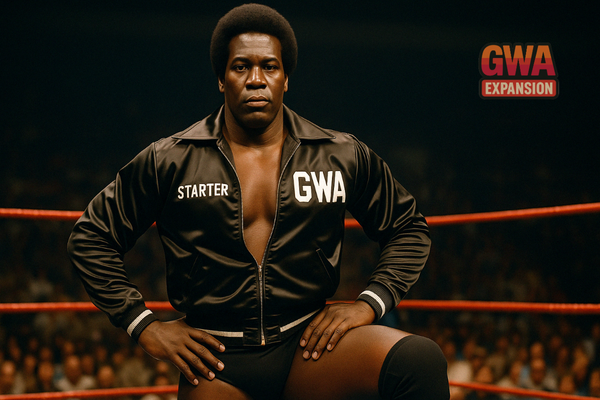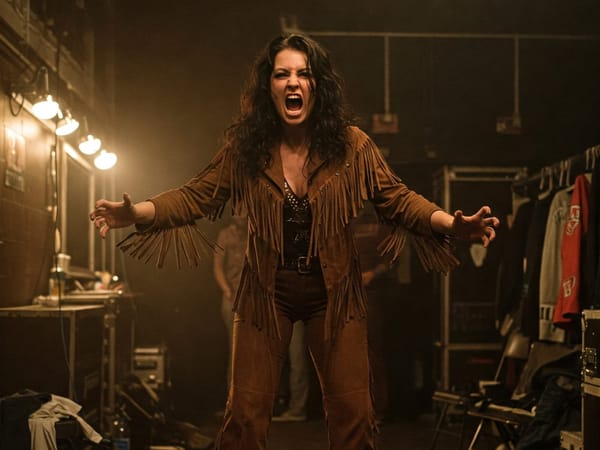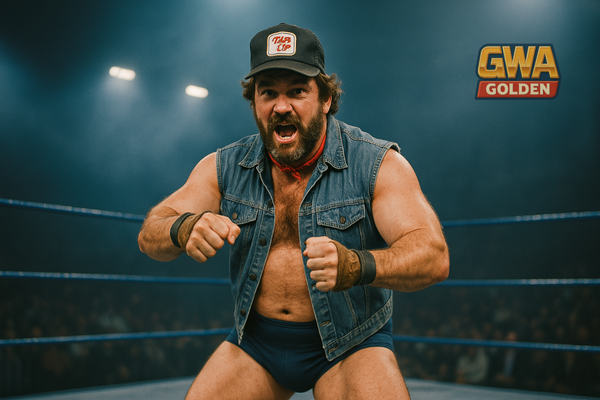"Big Sky" Billy Thompson

"Big Sky" Billy Thompson carved out a unique niche in the Great Western Wrestling Alliance (GWA) with his all-American cowboy persona and unyielding optimism. Known for his resilience and surprising victories, he became the first-ever GWA Great Plains Champion in 1973, marking a high point in his career. Despite his hard work and dedication, Billy's "gee, shucks" obtuseness and perpetual babyface character often prevented him from fully connecting with a broader fanbase. His wholesome image and reliance on luck led to a mixed reception, with some fans growing weary of his predictability. Nevertheless, Billy's genuine nature and consistent effort earned him a respected place in GWA history, highlighting the importance of authenticity and perseverance in the wrestling world.
| Height | Weight | Origin |
|---|---|---|
| 6'7" | 285lbs. | Thompson Family Ranch, Montana |
In reality, "Big Sky" Billy Thompson stood at 6 feet 4 inches tall and weighed 260 pounds. While still imposing, these actual measurements were slightly less exaggerated than the ones promoted in the GWA programs.
Early Life and Background
Billy Thompson was born and raised on a sprawling ranch in the heart of Montana, near Billings. From an early age, he was immersed in the rugged, hardworking lifestyle of a cowboy. His family, generations of cattle ranchers, instilled in him the values of hard work, resilience, and an unyielding connection to the land. As a child, Billy spent his days riding horses, tending to livestock, and helping with the endless chores that ranch life demanded. Despite the physical demands of his upbringing, Billy approached every task with a sunny disposition and a determination to succeed.
Growing up, Billy was known in his small town for his towering height and powerful build. He was a natural athlete, excelling in various sports during his high school years. However, his true passion lay in the open fields and wide skies of his family's ranch. Billy's inherent optimism and good-natured clumsiness often led to humorous situations, earning him a reputation as the town's lovable giant who always seemed to land on his feet, no matter the odds.
Billy's journey to the world of professional wrestling began rather unexpectedly. One evening, while breaking up a bar fight with his bare hands, he caught the eye of a local wrestling promoter. Impressed by Billy's raw strength and imposing presence, the promoter saw potential in the young cowboy and offered him an opportunity to train as a professional wrestler. Despite having little knowledge of the wrestling world, Billy's adventurous spirit and willingness to try new things led him to accept the offer.
Training for wrestling was a new and challenging experience for Billy, but his cowboy upbringing had prepared him well for the physical demands of the sport. Under the guidance of seasoned wrestlers, he honed his skills and quickly adapted to the high-energy, theatrical nature of professional wrestling. His natural charisma and unintentional humor endeared him to trainers and fellow wrestlers alike.
Rise to Fame in GWA
Billy Thompson's entry into the Great Western Wrestling Alliance (GWA) marked the beginning of a remarkable journey that would see him rise through the ranks despite numerous challenges. Early in his career, Billy's raw talent and imposing physique quickly caught the attention of the GWA audience. His debut matches showcased his natural strength and athleticism, but it was his down-to-earth cowboy persona and unintentional humor that truly endeared him to the fans.
In his first few matches, Billy faced off against a series of lesser-known opponents, securing victories that helped build his confidence and reputation. However, it wasn't long before he found himself pitted against more formidable foes. One of his early breakthrough moments came when he feuded with "Bayou" Benny Lacroix, a cunning and devious wrestler from the swamps of Louisiana. Despite being outmatched in terms of experience, Billy's sheer determination and resilience led to a series of closely contested matches. Although he often found himself on the brink of defeat, unforeseen technicalities or last-minute disqualifications typically swung the results in his favor, much to the delight of his growing fanbase.
Billy's career took a significant turn at the Soul Power Olympic Brawl in Los Angeles in August 1972. Scheduled to face "The Viper" Vic Steele, a ruthless and calculating competitor, Billy entered the match with high hopes. However, the bout proved to be a stunning and eye-opening experience. Steele's brutal tactics and merciless approach overwhelmed Billy, resulting in a decisive defeat. The loss was a harsh reality check, exposing Billy to a world where he wasn't always the crowd favorite and forcing him to confront the harsh realities of professional wrestling.
Undeterred by the setback, Billy used the experience as a catalyst for growth. Determined to prove himself, he trained harder and refined his in-ring skills. His next significant feud was with "Mountain Man" Mark Jensen, a towering adversary known for his raw power and relentless aggression. Their matches were intense and hard-fought, with Billy frequently finding himself on the losing end. Yet, once again, a series of technicalities and unforeseen circumstances often turned the tide in Billy's favor, leading to victories that, while unconventional, boosted his standing in the GWA.
Billy's rivalry with "Mad Dog" Marty Richardson further cemented his reputation as a resilient and tenacious competitor. Richardson's rule-breaking antics and fiery temper contrasted sharply with Billy's good-natured cowboy image. Their encounters were a clash of styles and personalities, captivating the audience and enhancing Billy's status as a fan favorite. Despite frequently being outmatched, Billy's uncanny ability to "fall up" and benefit from technical victories continued to endear him to the fans.
The defining feud of Billy's career was against "Vicious" Vinny Malone. Malone, with his dark charisma and brutal wrestling style, was the perfect foil to Billy's optimistic and resilient persona. Their matches were legendary, often drawing sell-out crowds and generating intense excitement. Although Billy often appeared to be on the verge of defeat, last-minute disqualifications, interference, or other unexpected twists typically resulted in Billy being declared the victor. These victories, while often controversial, only added to his legend and solidified his position as one of the GWA's top stars.
Billy's perseverance and unorthodox string of victories eventually led to his crowning achievement in 1973, when he won the first-ever GWA Great Plains Championship. The victory was a testament to his journey from an inexperienced rookie to a mostly beloved wrestling icon. Throughout his career, "Big Sky" Billy Thompson remained true to his cowboy roots, embodying the spirit of resilience and optimism. His ability to turn potential defeats into improbable victories made him a legendary figure in the GWA, and his story became an enduring part of wrestling history.
Signature Moves and Style
"Big Sky" Billy Thompson's fighting style was a unique blend of power moves, traditional grappling techniques, and an unorthodox touch that reflected his cowboy roots. His imposing height and muscular build allowed him to dominate opponents with raw strength, while his background in ranch work gave him an impressive level of endurance and toughness. Despite his occasional clumsiness, Billy's in-ring abilities showcased his adaptability and surprising agility for a man of his size.
Fighting Style:
Billy relied heavily on his strength to execute powerful slams and throws that left opponents reeling. His grappling skills, honed through rigorous training, allowed him to control matches by grounding his adversaries and applying effective submission holds. He often used his height to his advantage, delivering high-impact moves from a greater height, making them even more devastating.
Billy's cowboy upbringing influenced his approach in the ring. He incorporated moves that mimicked the rugged, physical tasks he performed on the ranch. This added a distinct flavor to his repertoire, making his style stand out among his peers. His fights were characterized by a mix of calculated power moves and moments of unpredictable improvisation, often leading to unexpected outcomes.
Signature Moves:
- Big Sky Slam: This move became Billy's hallmark. He would hoist his opponent high above his head and slam them to the mat with tremendous force. The sheer impact of the Big Sky Slam often left opponents stunned and gasping for breath.
- Montana Lariat: Drawing on his cowboy heritage, Billy's lariat was a devastating clothesline delivered with the force and precision of a charging bull. He would often catch opponents off guard, sending them crashing to the mat with a single, powerful strike.
- Ranch Hand's Revenge: This finishing move was a thunderous powerbomb. Billy would lift his opponent onto his shoulders, then drive them forcefully into the mat. The Ranch Hand's Revenge was known for its finality, often sealing the victory for Billy when executed.
- Cowboy Clutch: A submission hold that showcased Billy's grappling skills, the Cowboy Clutch involved locking his opponent in a modified camel clutch. Using his strength, he would apply immense pressure to the opponent's back and neck, making it difficult for them to escape or continue fighting.
- Sky High Elbow Drop: Billy would climb to the top turnbuckle and deliver a high-flying elbow drop. Despite his size, he executed the move with surprising agility, and the impact of his elbow crashing into his opponent's chest was a sight to behold.
Billy's unique fighting style and signature moves made him a standout performer in the GWA. His ability to combine raw power with a touch of cowboy flair captivated audiences and left an indelible mark on the world of professional wrestling.
Ring Entrance
"Big Sky" Billy Thompson's ring entrance was a spectacle that never failed to captivate the audience. As the opening chords of "Okie from Muskogee" by Merle Haggard filled the arena, a sense of anticipation electrified the crowd. The familiar, twangy melody echoed through the venue, invoking the spirit of the American heartland and setting the stage for Billy's grand arrival. The lights dimmed, and a single spotlight focused on the entrance ramp, highlighting the larger-than-life cowboy as he stepped into view.
Dressed in his signature cowboy hat, denim vest, and leather boots, Billy exuded a commanding presence. His wide grin and confident stride resonated with fans who saw him as a beacon of authenticity and resilience. As he made his way down the ramp, Billy took the time to engage with the crowd, tipping his hat to the cheering fans and high-fiving those along the aisle. His genuine connection with the audience was palpable, creating an atmosphere of camaraderie and excitement.
The journey to the ring was always an interactive experience. Billy often paused to exchange a few words with fans, his laughter mingling with the music that defined his entrance. The arena was bathed in warm, amber lighting, evoking the hues of a Montana sunset and further immersing the audience in Billy's world. The crowd's energy grew with each step he took, their cheers blending seamlessly with the country anthem that underscored his every move.
Upon reaching the ring, Billy climbed the steps with the ease of a seasoned athlete. He paused on the apron, taking a moment to soak in the adoration of the crowd before stepping between the ropes. As the final notes of "Okie from Muskogee" faded away, Billy raised his arms high, acknowledging the roaring approval of his fans. His entrance, a perfect blend of charisma, tradition, and genuine connection, set the tone for the match ahead and ensured that every appearance was a memorable event.
Championships and Achievements
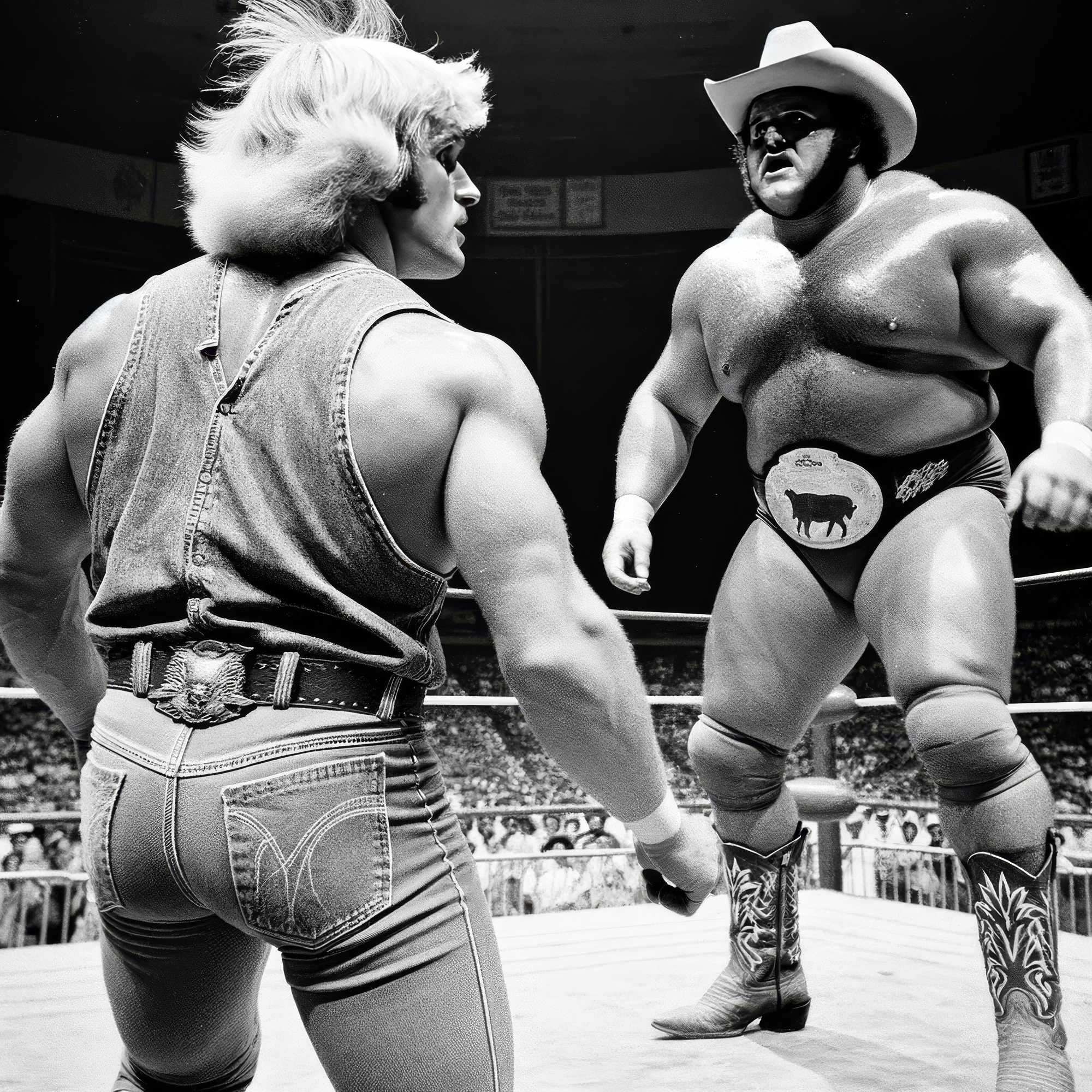
- GWA Great Plains Championship (1973):
- Billy's most prestigious accolade came when he won the first-ever GWA Great Plains Championship in 1973. This landmark victory established him as a cornerstone of the promotion and cemented his legacy in the wrestling world.
- Rookie of the Year (1971):
- Recognized for his impressive debut and rapid rise, Billy was awarded the GWA Rookie of the Year in 1971. His unique blend of strength, charisma, and cowboy charm captivated fans and critics alike.
- Feud of the Year (1973) – vs. "Vicious" Vinny Malone:
- Billy's legendary rivalry with "Vicious" Vinny Malone was awarded Feud of the Year in 1973. Their clashes were the stuff of legend, drawing massive crowds and creating some of the most memorable moments in GWA history.
- Most Improbable Victories Award (1976):
- Given his knack for turning potential losses into victories through unexpected twists, Billy was humorously awarded the Most Improbable Victories Award. This recognition celebrated his unique ability to prevail against all odds.
- Lifetime Achievement Award (1990):
- In recognition of his long-standing influence and dedication to the sport, Billy received the Lifetime Achievement Award in 1990. This prestigious accolade celebrated his contributions both inside and outside the ring.
"Big Sky" Billy Thompson's career in the GWA was marked by a series of remarkable achievements and accolades. His ability to connect with fans, his unforgettable matches, and his indomitable spirit ensured that his legacy would be remembered for generations.
Memorable Rivalries and Matches
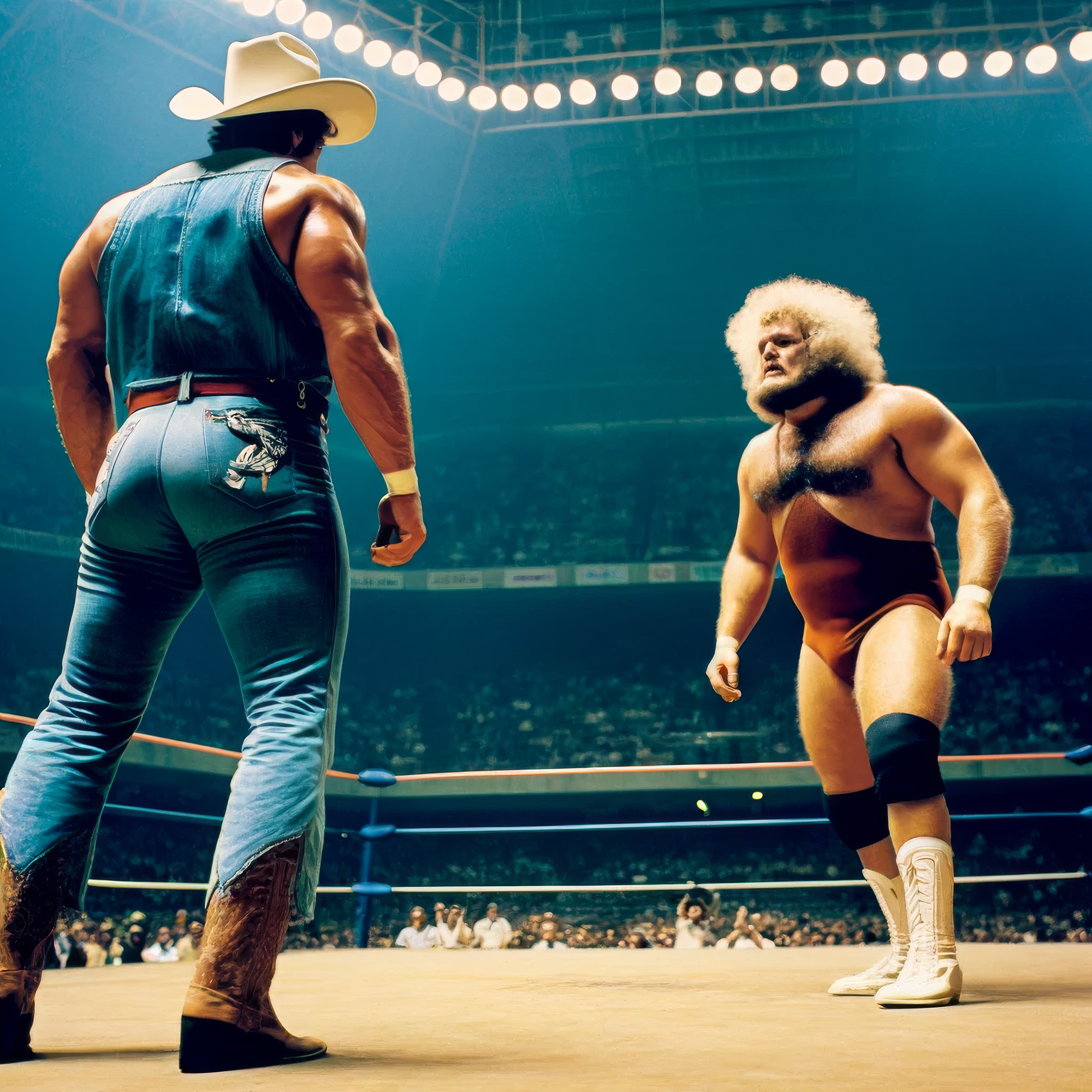
"Big Sky" Billy Thompson's career in the GWA was marked by several key rivalries that defined his journey and captivated audiences. One of his earliest and most significant feuds was with "Bayou" Benny Lacroix. The cunning and devious wrestler from Louisiana pushed Billy to his limits, their matches characterized by intense physicality and high drama. Despite often finding himself on the brink of defeat, Billy's uncanny knack for benefiting from technicalities turned these encounters into victories, endearing him even more to the fans.
Another pivotal rivalry was with "The Viper" Vic Steele, whose brutal tactics and calculating nature presented a stark contrast to Billy's straightforward, all-American style. Their clash at the Soul Power Olympic Brawl in Los Angeles in August 1972 was a defining moment. Billy's stunning defeat served as a wake-up call, exposing him to the harsh realities of professional wrestling and igniting a renewed determination to prove himself. This loss, rather than dampening his spirit, fueled his resolve to rise through the ranks.
Billy's ongoing battles with "Mountain Man" Mark Jensen further showcased his resilience and adaptability. The towering and aggressive Jensen was a formidable opponent, and their matches were nothing short of spectacular. While Billy often appeared to be outmatched, unexpected turns of events frequently tilted the outcomes in his favor. These victories, though often unconventional, demonstrated Billy's resourcefulness and ability to persevere under pressure.
Perhaps the most iconic rivalry of Billy's career was with "Vicious" Vinny Malone. Malone's dark charisma and ruthless style made him a natural adversary for the optimistic and resilient Billy. Their legendary matches drew sell-out crowds and generated intense excitement. Despite being frequently overpowered by Malone's brutality, Billy's improbable victories through last-minute disqualifications or interference became a hallmark of their encounters. This rivalry not only solidified Billy's status as a beloved underdog hero but also added depth to his character, illustrating his ability to triumph against all odds.
In 1973, Billy achieved his crowning moment by becoming the first-ever GWA Great Plains Champion. This historic victory was a testament to his journey from an inexperienced rookie to a wrestling icon. Throughout his career, Billy's defining moments were marked by his resilience, unwavering optimism, and the ability to turn potential defeats into legendary victories, leaving an indelible mark on the world of professional wrestling.
The Legend of the Thunderstorm Match
One of the most captivating and unexpected moments in "Big Sky" Billy Thompson's career occurred during a match that has since become legendary in GWA history. In the summer of 1975, Billy was scheduled to face his fierce rival, "Mountain Man" Mark Jensen, in an outdoor event aptly named "Rumble in the Rockies," set against the breathtaking backdrop of the Montana wilderness.
As the match progressed, dark clouds began to gather ominously over the makeshift ring. The tension between Billy and Mark was palpable, each man fighting with all their might. Midway through the match, a sudden and violent thunderstorm erupted, drenching the wrestlers and the ring in torrential rain. The match, however, did not stop. Instead, it transformed into a dramatic, almost mythic battle.
The audience, soaked and electrified by the spectacle, watched in awe as lightning streaked across the sky, illuminating the drenched combatants. Billy, embodying the indomitable spirit of a true cowboy, seemed to draw strength from the raging elements. With each thunderclap, his movements became more forceful, his determination more evident. The storm's ferocity mirrored the intensity of the fight, creating an unforgettable visual and emotional experience.
In a breathtaking climax, Billy executed his signature "Big Sky Slam" on Mark Jensen, just as a bolt of lightning struck nearby, casting a brilliant flash over the ring. The combination of the thunderous slam and the raw power of the storm left the audience and even the commentators speechless. Despite the dangerous conditions, Billy secured the victory, his triumphant roar blending with the rumble of the storm.
This match, forever known as the "Thunderstorm Match," cemented Billy's legendary status in the GWA. It highlighted his resilience, his connection to the wild elements of his Montana home, and his ability to turn even the most adverse circumstances into a memorable triumph. The tale of the Thunderstorm Match continues to be recounted by wrestling fans, adding a layer of myth and awe to the legacy of "Big Sky" Billy Thompson.
Outside the Ring
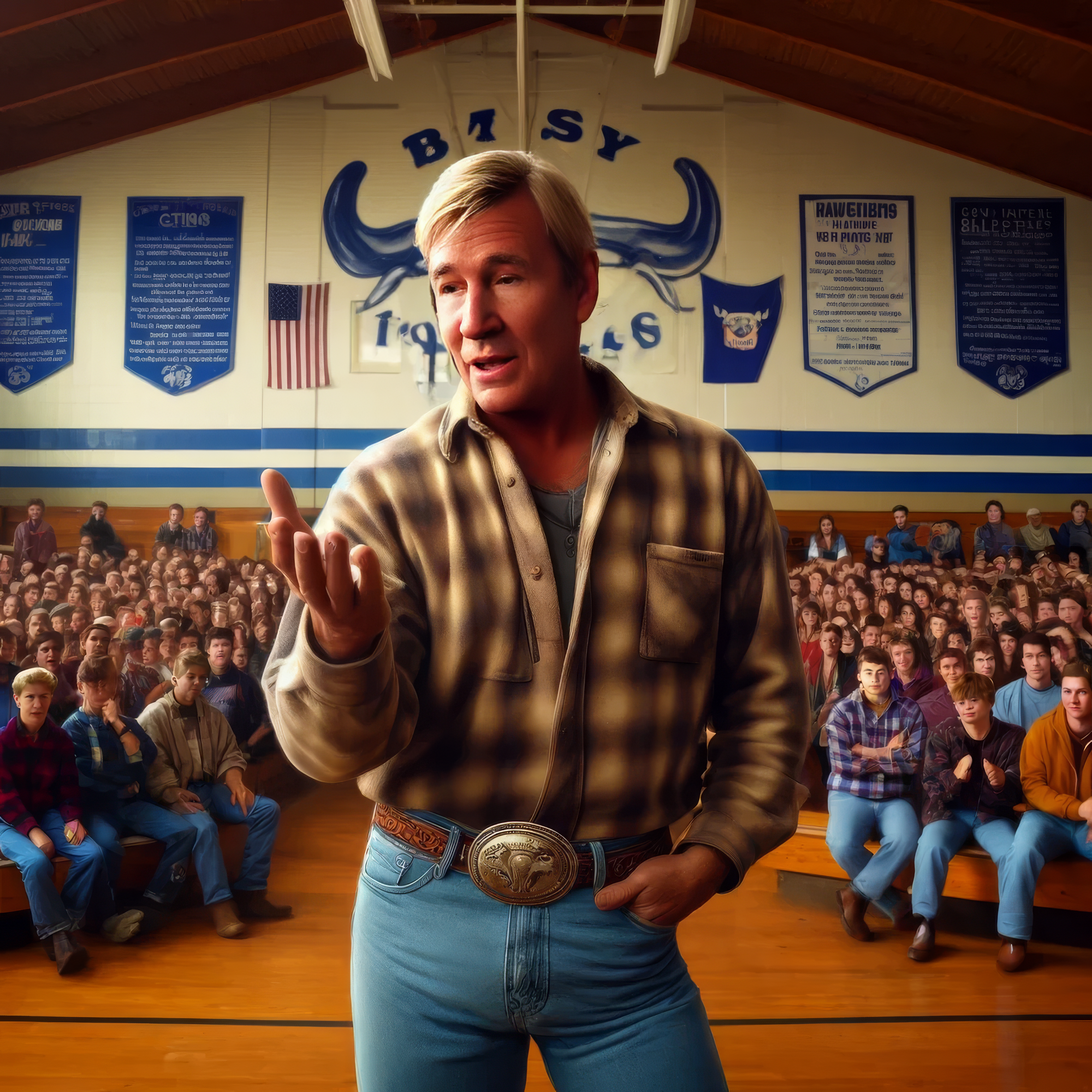
- Ranch Management: When not in the ring, Billy dedicated his time to managing the Thompson Family Ranch in Montana. His hands-on approach and commitment to sustainable ranching practices mirrored his hardworking and down-to-earth persona, grounding him in his cowboy roots.
- Youth Mentorship Programs: Billy actively participated in mentorship programs for underprivileged youth, teaching them about hard work, resilience, and the values of the cowboy way. His genuine connection with the kids and his ability to inspire them made him a beloved figure in the community.
- Public Speaking Engagements: Leveraging his status as a wrestling icon, Billy often spoke at schools and community events, sharing stories of his journey and the importance of perseverance. His charismatic storytelling and positive message resonated with audiences, enhancing his complex persona beyond the ring.
- Charitable Rodeo Events: Billy organized and participated in charitable rodeo events, raising funds for various causes such as local hospitals and educational scholarships. His involvement in these events showcased his love for the cowboy lifestyle and his dedication to giving back.
- Acting in Western Films: Billy's cowboy charisma landed him roles in several Western films, where he portrayed rugged and heroic characters. These roles allowed him to blend his wrestling persona with his love for the Western genre, further enriching his public image.
- Writing and Storytelling: Billy channeled his experiences into writing, authoring a series of children's books and memoirs that celebrated cowboy values and life lessons. His storytelling prowess extended his influence, inspiring both young readers and long-time fans.
These activities reflected "Big Sky" Billy Thompson's multifaceted personality, blending his cowboy heritage, wrestling fame, and genuine desire to make a positive impact outside the ring.
Legacy and Impact
Throughout his career, "Big Sky" Billy Thompson experienced a dynamic and evolving relationship with the fans of the Great Western Wrestling Alliance (GWA). Initially, his wholesome, all-American cowboy persona and sunny disposition won over the crowd. Fans appreciated his earnestness, resilience, and ability to "fall up," transforming potential defeats into unlikely victories through sheer luck and technicalities. His genuine connection with the audience, coupled with his humble and approachable nature, made him a beloved figure in the early stages of his career.
However, as time went on, the very traits that initially endeared Billy to the fans began to create a divide. His unrelenting optimism and perpetual good fortune in the ring started to come across as overly saccharine and predictable. Wrestling fans, known for their desire for authenticity and grit, began to see Billy's constant "too good to be true" victories as a bit contrived. The charm of the underdog winning through luck started to wear thin, and a segment of the audience grew weary of his perpetual babyface character.
During this period, Billy's relationship with the fans became more complex. While he still retained a loyal following who admired his positive attitude and cowboy charisma, a noticeable portion of the audience started to express their discontent. Boos and jeers began to mix with the cheers, reflecting the fans' desire for a more nuanced and realistic portrayal. The backlash wasn't entirely personal; it was more about the fans' craving for variety and a departure from the predictable narrative Billy represented.
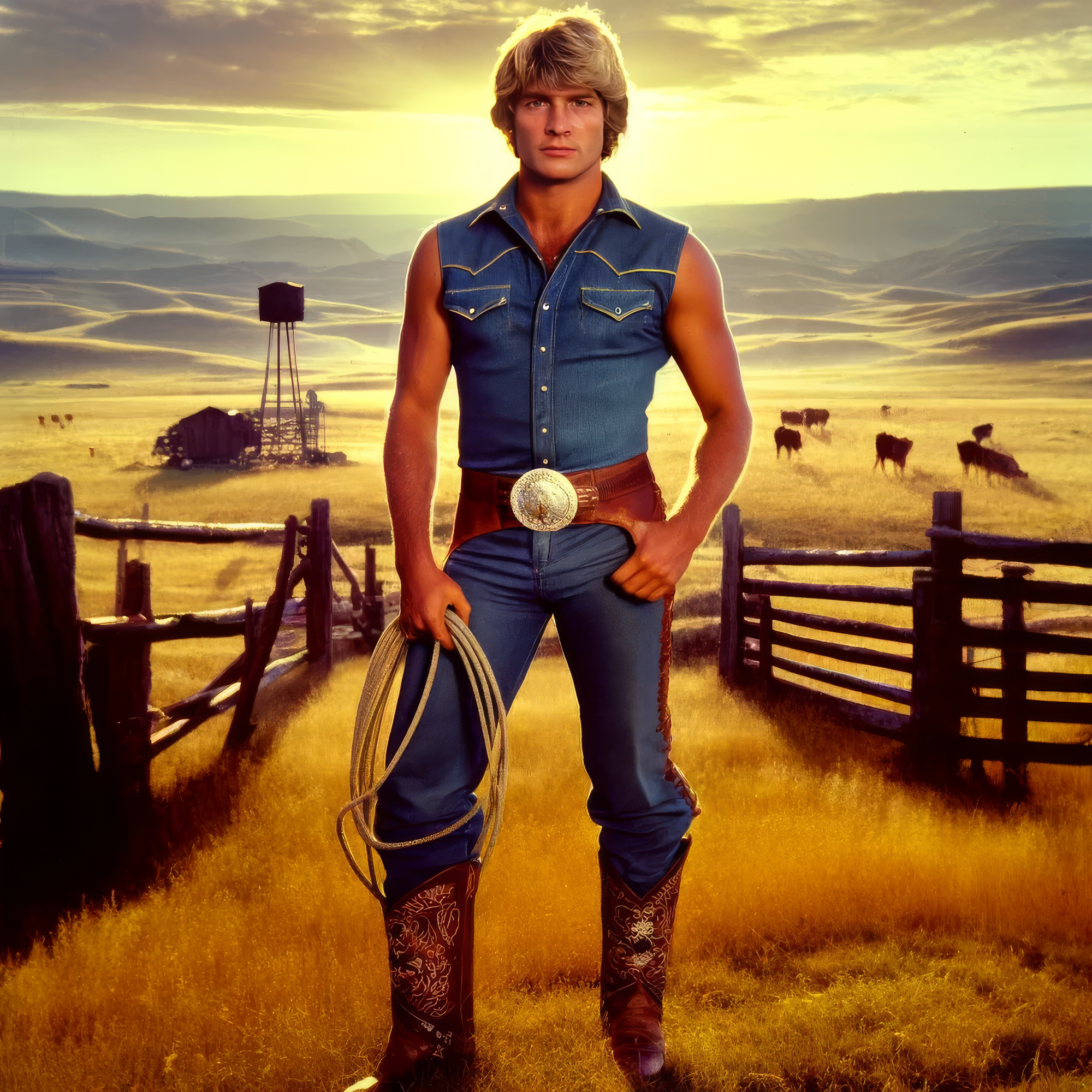
In response to this shift, Billy showed his adaptability and resilience once again. He began to incorporate more depth into his character, acknowledging his flaws and the criticisms from the fans. He engaged in storylines that showcased his struggles and vulnerabilities, allowing the audience to see a different side of him. This evolution helped to mend his relationship with the fans, as they started to appreciate his efforts to remain true to himself while also addressing their desire for a more multifaceted character.
By the end of his career, Billy had regained much of the respect and admiration from the wrestling community. His journey from an adored babyface to a more complex and relatable figure resonated with the fans, leaving a lasting impact on the GWA and securing his legacy as a beloved, albeit imperfect, hero.


